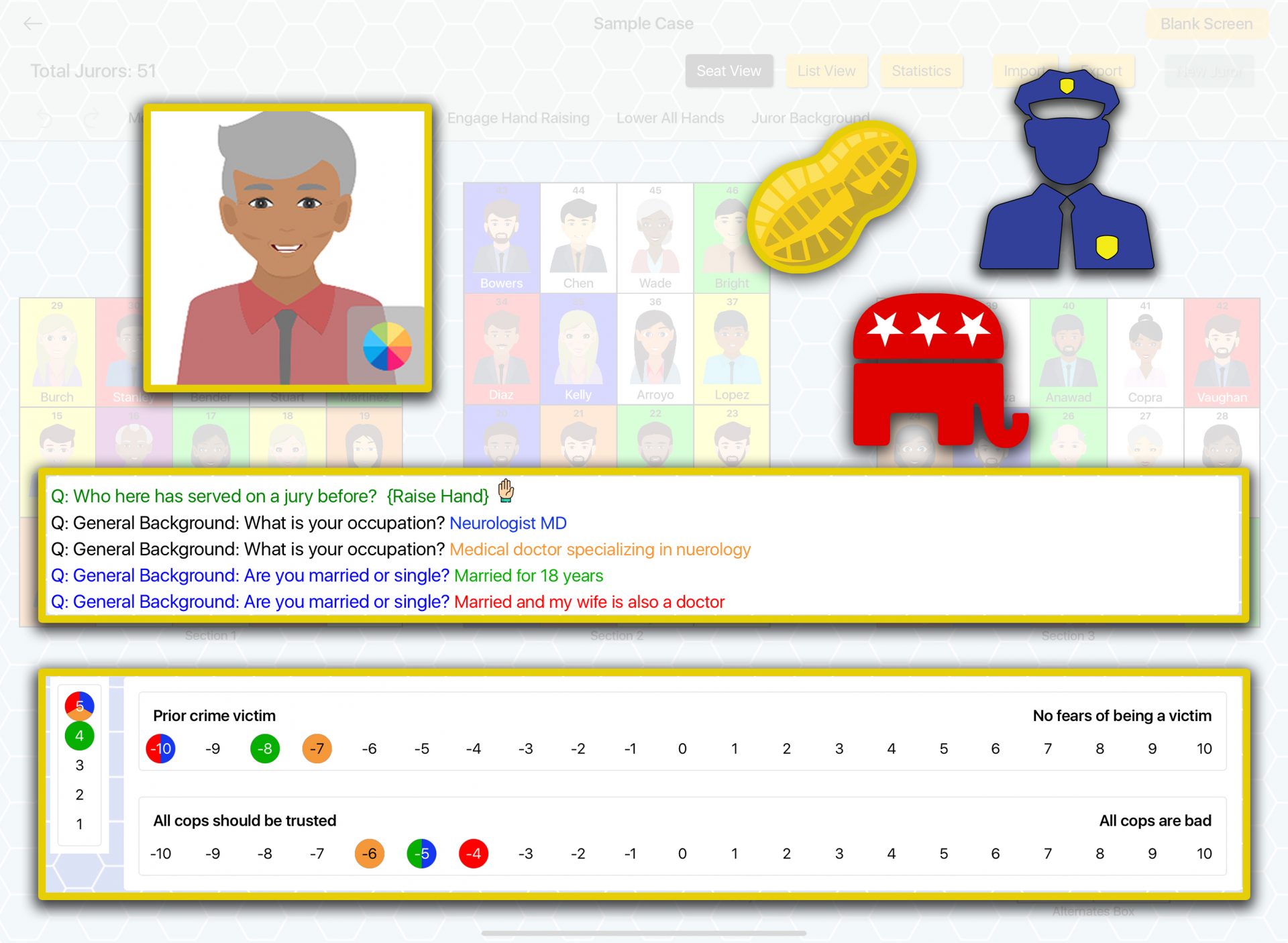Selecting the right jury is a critical aspect of trial preparation, and effective communication within the legal team can make all the difference. While much of the discussion around jury selection focuses on the attorney’s spoken words to the jurors, the communication strategy among the attorney and their team is equally important. Let’s delve into the three primary modes of communication used by trial teams to identify favorable jurors and recognize potential threats: speaking, paper notes, and digital notes.
Speaking: The Power of Direct Communication
Direct spoken communication offers speed and efficiency, allowing team members to quickly relay important information. However, it comes with its challenges. Spoken words can be overheard by the jury or the opposing side, requiring close proximity to maintain privacy – a tricky feat when an attorney is engaged with the jury and needs to receive messages from team members. Additionally, focusing on spoken words means that only one person can be heard and understood at a time.
Paper Notes: Tangible but Troublesome
Paper notes are a common method of communication among trial teams, created quickly by team members. Yet, the lack of an organized format can lead to issues. Different writing styles and readability levels can complicate the interpretation of notes, and confusion may arise regarding which juror the notes pertain to. Moreover, when it comes time to challenge for cause, the team may find themselves sifting through varying notes on multiple pages or spreadsheets, making it difficult to present a cohesive argument.
Digital Notes: The Future of Efficient Communication
Digital communication brings numerous advantages, including instantaneous and clear communication among the entire team. Each team member is assigned a unique color for easy identification, and symbols are used to categorize information effectively. Questions asked to jurors are paired with responses, reducing typing and improving accuracy. Color codes help communicate crucial information to the trial lawyer, such as whether a juror is favorable, unfavorable, or requires further questioning.
The digital approach also allows for instant messaging and recording of jury selection choices. Team members can mark who raised their hand for specific questions, enabling the trial lawyer to maintain composure and avoid misstatements. Despite the costs associated with technology like iPads and keyboards, and the learning curve for the software, digital notes provide an organizational and strategic edge over the competition.
Practical Tips for Legal Teams
To harness the power of effective communication in jury selection, legal teams should consider the following tips:
- Invest in Technology: While the initial cost of iPads, and Honey Juror, the benefits of digital communication tools far outweigh the drawbacks.
- Train Your Team: Ensure all team members are proficient with the software to maximize efficiency and accuracy.
- Utilize Color Codes and Symbols: Implement a system of color coding and symbols to quickly convey crucial information.
- Maintain Privacy: Use direct spoken communication carefully, ensuring privacy and avoiding eavesdropping by the jury or opposing side.
- Organize Paper Notes: If using paper notes, develop a consistent and clear format to prevent confusion and improve readability.
Effective communication within the legal team is vital for successful jury selection. By adopting modern communication strategies and tools, legal teams can enhance their organizational capabilities, present a confident front, and ultimately secure a favorable jury composition. Best of luck picking your next Jury.

